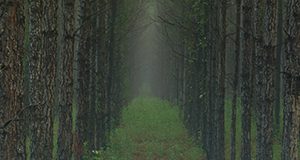Abstract
The state of Florida is half woods, with 26,807 square miles of forestland. Our extensive natural and planted pine and hardwood forests are used for production of a wide variety of wood building materials, consumer paper and packaging products, chemicals, and renewable biomass fuels. In addition to industrial forest-related activity, public forestlands in Florida support a variety of recreational activities, attract a significant number of recreational visitors, and provide many non-marketed environmental or ecosystem services. This 4-page fact sheet written by Christa Dean Court, Alan W Hodges, and Mohammad Rahmani and published by the UF/IFAS Food and Resource Economics Department describes a study that analyzed the economic contributions of the forest industry and forest-based recreation activities to the state of Florida in 2016.
http://edis.ifas.ufl.edu/fe1051
References
Court, C.D., A.W. Hodges, M. Rahmani and T. H. Spreen. Economic Contributions of the Florida Citrus Industry in 2015-16. Sponsored project report to the Florida Department of Citrus, University of Florida, Food and Resource Economics Department, Gainesville, 35 pages, May 9, 2017, available at http://fred.ifas.ufl.edu/pdf/economic-impact-analysis/Economic_Impacts_of_the_Florida_Citrus_Industry_2015_16.pdf
Hodges, A.W., H. Khachatryan, M. Rahmani and C.D. Court. Economic Contributions of the Environmental Horticulture Industry in Florida in 2015. Sponsored project report to Florida Nursery Growers and Landscape Association. University of Florida, Food and Resource Economics Department, Gainesville, 57 pages, Nov. 22, 2016, available at http://fred.ifas.ufl.edu/pdf/EconContEnvirHortIndFL2015-11-15-16.pdf
Unless otherwise specified, articles published in the EDIS journal after January 1, 2024 are licensed under a Creative Commons Attribution-NonCommercial-NoDerivs 4.0 International (CC BY-NC-ND 4.0) license.

